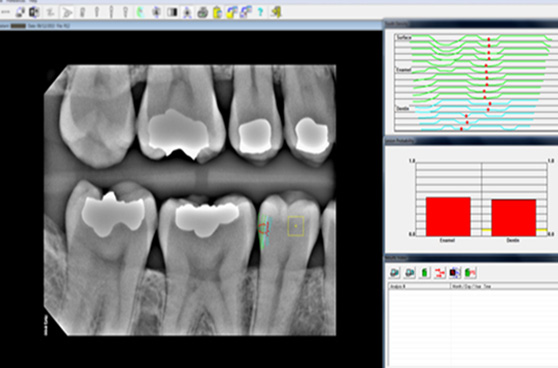
For years, the most state-of-the-art way for a dentist to detect surface cavities not seen on x-rays has been by using the dental explorer, or what many refer to as the "hook." This hook has been the source of many initial fears for many patients. Our doctors understand and respect our patients apprehension and have invested the time and the expense of training our hygienists on new state of the art ways to detect cavities.
Our offices are equipped with many devices such as the DIAGNOdent by Kavo, the Spectra from Air Techniques, and SOPRO LIFE from Acteon. These devices work somewhat differently, but under the same premise. They all use light and a small calibration device to detect cavities at their earliest state. This no-x-ray exam involves shining a specified, painless, laser-like light onto the tooth, and a computer actually determines with extreme accuracy if there is a cavity, and if it is large or small.
Through early detection of tooth decay, we can keep cavities from growing. Treating them in the earliest stage is virtually painless. When possible, we also use another laser, the Waterlase MD from Biolase or the Powerlase from Lares to "laser drill" these cavities in an extremely precise and comfortable way. No traditional dental drill, no vibration, heat, or sound.
Another benefit to our state-of-the-art digital technology is the use of digital x-rays. Although radiation emitted by traditional x-ray machines is low, digital x-rays offer more protection against radiation by reducing emissions of radiation up to 90%. Our staff can view digital x-rays on monitors and even enlarge the results to fully explore your oral health.

